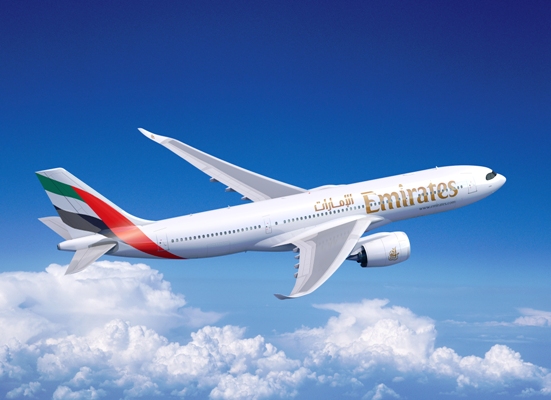Former Kenya President, Uhuru Kenyatta
Economic policies pursued in the later years of President Uhuru Kenyatta’s administration helped benefit wealthy Kenyans the most, the World Bank disclosed yesterday.
The Bank in the report capturing Kenya’s economic health reckons that the gap between the rich and poor is unchanged from 2015, adding that it narrowed between 2005 and 2015.
It says the structure of Kenya’s economy has lately failed to lift millions from poverty, turning the spotlight on the Kenyatta regime.
Kenya had delivered average economic growth of more than five per cent in the past decade.
“Though economic growth contributed significantly to poverty reduction in Kenya, growth has become less pro-poor in recent years,” the World Bank said in the report.
“Robust GDP per capita growth since 2005, along with growth in private consumption, saw the share of the population living below the international poverty line fall from 43.9 to 33.4 per cent (2015-2019).”
This echoes comments from analysts and the Central Bank of Kenya who have faulted the structure of Kenya’s economy for delivering economic growth without creating jobs or an increase in incomes.
CBK Governor Patrick Njoroge in 2019 said that households have not felt Gross Domestic Product (GDP) growth, arguing that increased infrastructure spending has not spread the wealth among working Kenyans.
The comments come in a period when corporate Kenya has witnessed reduced profitability that has ushered in job cuts, freezes in hiring and near-stagnant wages as companies race to protect their profit margins.
Kenya has since 2013 embarked on major infrastructure projects to make up for decades of under-investment that stunted economic growth.
This is underlined by the construction of the Standard Gauge Railway from Mombasa to Naivasha using nearly Sh500 billion of Chinese loans in a borrowing binge that economists say is saddling future generations with too much debt.
Mr Kenyatta took over power in 2013 from the late Mwai Kibaki who turned Kenya’s economy from negative to GDP growths in excess five of per cent.
Mr Kibaki’s landslide victory in 2002 was seen as a repudiation of Daniel Arap Moi’s 24 years of corruption, oppression and economic failure.
The average monthly income for Kenyans rose at the fastest pace in six years to Sh20,123 last year following recovery from Covid-19 economic hardships in changes that reflect the growing pay inequality.
The Kenya National Bureau of Statistics (KNBS) data show the country’s annual gross national income (GNI) per capita grew 11.6 per cent to hit Sh241,467 ($1,979) last year, up from Sh216,337 ($1,773) in 2020.
The measure of average income—which captures money earned from both the formal and the informal sector—however, reveals the deep wealth and earnings inequality in Kenya that has left the country with a thin middle class and super earners with the majority remaining stuck in the lower income bracket.
But the World Bank reckons that income growth has been skewed to the advantage of the middle class and the rich.
“This trend reflected increases in national income rather than significant shifts in resource distribution which remains too skewed for inclusive growth,” said the World Bank. “Inequality in Kenya fell between 2005-2015 but has stagnated through 2019.”
Kenya’s economy has grown on average by 5.0 per cent annually over the last decade save for the Covid-19 contraction, but the benefits have not been equally distributed, and the gap between rich and poor is rising, say campaigners.
The number of super-rich in Kenya is among the fastest growing in the region.
Yet while a minority of Kenyans are accumulating wealth, the benefits of economic growth have not trickled down.
According to an earlier report by Kenya Fight Inequality Alliance, just 8,300 individuals in Kenya own the same wealth as the rest of the country’s more than 45 million people, and the richest 10 per cent earn 23 times more than the poorest 10 per cent.
The majority of the 2.9 million individuals employed in the formal sector are domiciled in the lower wage brackets, with only 358,833 or 15 per cent earning more than Sh100,000 per month.
Some 1.18 million workers or 40 per cent are paid below Sh50,000 per month and at least 51,770 are earning below the national average of Sh20,123.
Data from Knight Frank’s Wealth Report show that the country was home to 3,362 dollar millionaires at the end of last year, with the number expected to grow to 4,274 by 2026.
Out of these dollar millionaires, 88 have a net worth of more than $30 million (Sh3.7 billion), placing them in the ultra-high net worth category.
This emerged in a year when the proportion of financially stable Kenyans more than halved in a period of five years amid runaway cost of living and stagnant pay, a Central Bank of Kenya-backed household survey showed.
The Financial Access (FinAccess) Household survey found that the share of adults with high levels of financial health to afford their day-to-day financial needs, deal with emergencies and invest in future goals – technically called the top wealth quintile – shrank to 15 per cent last year from 40 per cent.
-Business Daily






